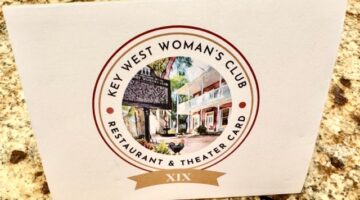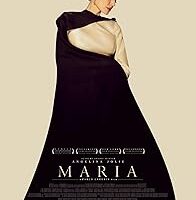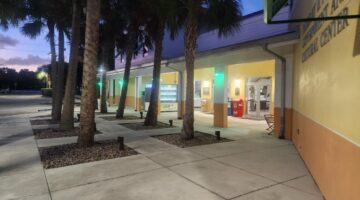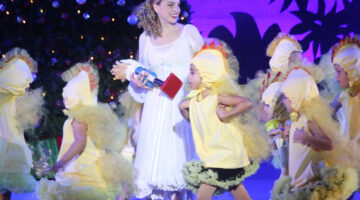Howelings
Promoting Nevada’s Explosive Past
Ain’t tourism fun? It’s meant to be, yes, but some destinations are just that bit more complicated to sell than others.
Take the desert state of Nevada, for example, which is gambling that its radioactive past and its history of gangsterism on the Vegas strip will appeal to the masses much like Key West reckons on the coral reef and Fantasy Fest nudism to pull in the masses to our southernmost city.
The National Atomic Testing Museum, which is located in Las Vegas, must surely be the weirdest museum in the whole wide land, although it is actually affiliated with the Smithsonian Institution and is one of only 37 Congressionally designated museums in U.S.
Within its premises on Flamingo Road, visitors can enter a replica of the Nevada Test Site’s Control Point and push a button to simulate a nuclear test. The museum covers the period from the first atmospheric test in 1951 through the Cold War era of multiple underground tests, which in a flash created vast caverns beneath the desert lined with molten rock of unknown chemical composition.
Exhibits at the Atomic Testing Museum include the irresistible Ground Zero Theater, simulating what it was like to witness aboveground explosions with the naked (but shielded) eye. There’s also the Myth or Reality room, an exhibit of declassified information from the Area 51 testing ground. ET anyone?
Continuing the gaming town’s uniquely odd pursuit of the tabloid tourist is the Mob Museum, over on Stewart Avenue, a mere stroll away from legendary Fremont Street. Billing itself as a “world-class destination in downtown Las Vegas dedicated to the story of organized and law enforcement,” this is the only public place in America to invite the curious to visit “the legendary underworld of the American Mafia.”
Six hundred artifacts and interactive exhibits bring to life the true story of sin city’s origins and sensational growth. The museum opened in 2012 and has since become as notorious as the characters it celebrates. “One of 20 places every American should see,” raved Fox News. The British Guild of Travel Writers gave it the “Best Wider World” award.
The Mob Museum is an accumulation of mobster and law-enforcement memorabilia that is now considered the largest collection of such material ever collected under one roof anywhere.
Nor is it limited to Bugsy Siegel or Mafia activities associated with Las Vegas alone. Here the public can ogle the barber chair that Albert Anastasia was sitting in when gunned to death in New York City. There’s also the brick wall from the 1929 St. Valentine’s Day Massacre in Chicago. Interactive exhibits, boasts the museum, offer an insider’s look at some of organized crime’s top names, including Al Capone and Lucky Luciano, plus artifacts from law enforcement’s efforts to restrain their activities, including weapons.
The Mob Museum is amusingly installed in the former federal courthouse and U.S. Post Office, which was built in 1933 and was the site, back in 1950, of one of the 14 national Kefauver hearings that exposed organized crime in America.
Rounding out sin city’s agglomeration of appropriate cultural collections is the Burlesque Hall of Fame on neon-lit Fremont Street itself, which celebrates the history of strip and tease like no other such museum in the world. Here are costumes worn, however skimpily, by Blaze Starr and Tempest Storm. At the souvenir store, be sure to pick up a copy of “How to Strip for Your Husband.”
Although Key West has indeed had its pirate museums and wrecker’s museums and hurricane museums, we’ve never quite had the chutzpah to try a drug-smuggler’s museum or an Ecstasy Hall of Shame.
But in the name of tourism, it can never be too late.
By Mark Howell
Ain’t tourism fun? It’s meant to be, yes, but some destinations are just that bit more complicated to sell than others.
Take the desert state of Nevada, for example, which is gambling that its radioactive past and its history of gangsterism on the Vegas strip will appeal to the masses much like Key West reckons on the coral reef and Fantasy Fest nudism to pull in the masses to our southernmost city.
The National Atomic Testing Museum, which is located in Las Vegas, must surely be the weirdest museum in the whole wide land, although it is actually affiliated with the Smithsonian Institution and is one of only 37 Congressionally designated museums in U.S.
Within its premises on Flamingo Road, visitors can enter a replica of the Nevada Test Site’s Control Point and push a button to simulate a nuclear test. The museum covers the period from the first atmospheric test in 1951 through the Cold War era of multiple underground tests, which in a flash created vast caverns beneath the desert lined with molten rock of unknown chemical composition.
Exhibits at the Atomic Testing Museum include the irresistible Ground Zero Theater, simulating what it was like to witness aboveground explosions with the naked (but shielded) eye. There’s also the Myth or Reality room, an exhibit of declassified information from the Area 51 testing ground. ET anyone?
Continuing the gaming town’s uniquely odd pursuit of the tabloid tourist is the Mob Museum, over on Stewart Avenue, a mere stroll away from legendary Fremont Street. Billing itself as a “world-class destination in downtown Las Vegas dedicated to the story of organized and law enforcement,” this is the only public place in America to invite the curious to visit “the legendary underworld of the American Mafia.”
Six hundred artifacts and interactive exhibits bring to life the true story of sin city’s origins and sensational growth. The museum opened in 2012 and has since become as notorious as the characters it celebrates. “One of 20 places every American should see,” raved Fox News. The British Guild of Travel Writers gave it the “Best Wider World” award.
The Mob Museum is an accumulation of mobster and law-enforcement memorabilia that is now considered the largest collection of such material ever collected under one roof anywhere.
Nor is it limited to Bugsy Siegel or Mafia activities associated with Las Vegas alone. Here the public can ogle the barber chair that Albert Anastasia was sitting in when gunned to death in New York City. There’s also the brick wall from the 1929 St. Valentine’s Day Massacre in Chicago. Interactive exhibits, boasts the museum, offer an insider’s look at some of organized crime’s top names, including Al Capone and Lucky Luciano, plus artifacts from law enforcement’s efforts to restrain their activities, including weapons.
The Mob Museum is amusingly installed in the former federal courthouse and U.S. Post Office, which was built in 1933 and was the site, back in 1950, of one of the 14 national Kefauver hearings that exposed organized crime in America.
Rounding out sin city’s agglomeration of appropriate cultural collections is the Burlesque Hall of Fame on neon-lit Fremont Street itself, which celebrates the history of strip and tease like no other such museum in the world. Here are costumes worn, however skimpily, by Blaze Starr and Tempest Storm. At the souvenir store, be sure to pick up a copy of “How to Strip for Your Husband.”
Although Key West has indeed had its pirate museums and wrecker’s museums and hurricane museums, we’ve never quite had the chutzpah to try a drug-smuggler’s museum or an Ecstasy Hall of Shame.
But in the name of tourism, it can never be too late.
[livemarket market_name="KONK Life LiveMarket" limit=3 category=“” show_signup=0 show_more=0]





No Comment